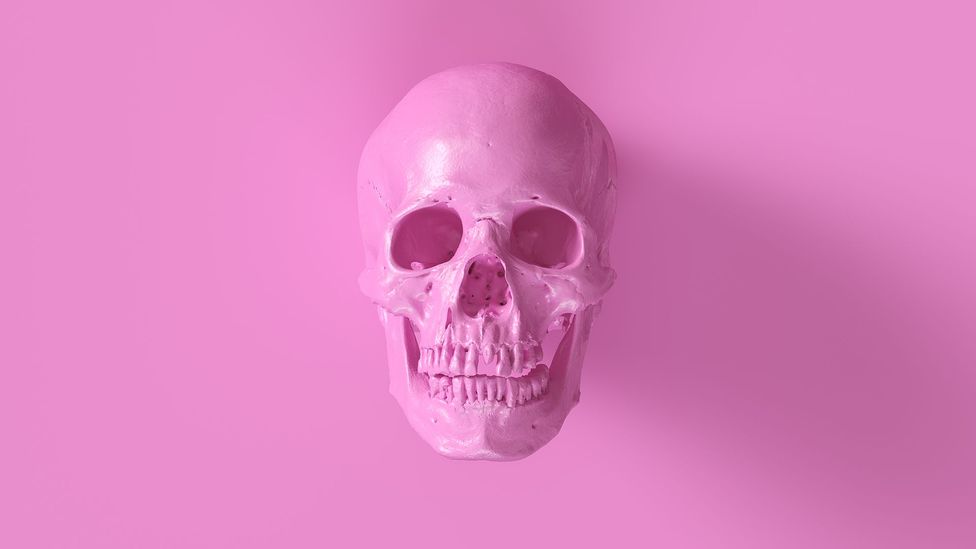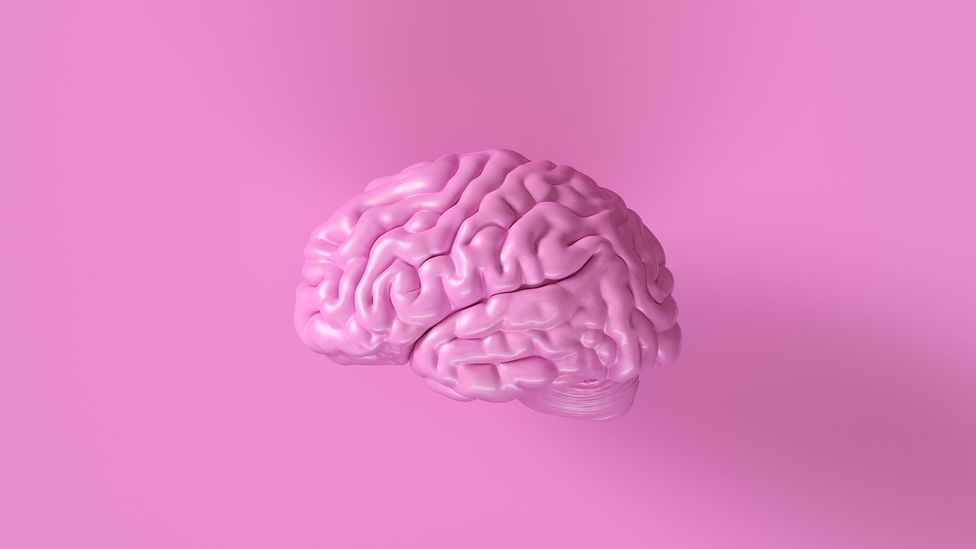How to Know if You Are Going Undiagnosed
'Everybody was telling me there was nothing wrong'
(Epitome credit:
Getty Image
)

Women are more than likely to wait longer for a health diagnosis and to be told information technology's 'all in their heads'. That tin be lethal: diagnostic errors cause 40,000-80,000 deaths in the U.s.a. alone.
Compared to many other diseases, diagnosing a brain neoplasm is adequately straightforward. Promptly detecting it comes down to being concerned plenty nigh the early symptoms – which range from fatigue to seizures to personality alter – to get an prototype of the encephalon. Either the neoplasm is there, or it isn't.
Only in 2016, the Brain Tumour Charity released a report on the handling of brain tumour patients in the United kingdom. It constitute that almost one in three of them had visited a doctor more than than five times before receiving their diagnosis. Near a quarter weren't diagnosed for more a twelvemonth.
Women, also as low-income patients, experienced longer delays. They were more likely than men to encounter 10 or more months pass betwixt their first visit to a doctor and diagnosis –and to have made more than five visits to a doctor prior to diagnosis.
Yous might also similar these other stories in the Health Gap :
• Why doctors dismiss women's pain
• Should we rename women's body parts?
• The health risks of maturing early
I 39-year-quondam adult female quoted in the study recalled: "One of the GPs I saw actually made fun of me, maxim 'what did I call up my headaches were, a encephalon tumour?' I had to request a referral to neurology. I went dorsum repeated times to exist given antidepressants, sleep charts, analgesia, etc. No one took me seriously."

To diagnose a brain tumour, a dr. simply must be concerned enough to order imaging – but it takes doctors longer to do this for women than men (Credit: Getty Images)
A growing body of research is exploring how "implicit" bias – unconscious biases that are usually not linked to consciously held prejudiced attitudes – contributes to disparities in medical treatment. "We want to think that physicians just view the states every bit a patient, and they'll care for everyone the aforementioned, but they don't," says Linda Blount, president of the Blackness Women's Health Imperative. "Their bias absolutely makes its way into the test room."
One of the well-nigh pervasive implicit biases in the medical organisation regards gender.
Brain tumours are only one example. A 2015 study revealed a longer lag fourth dimension from the onset of symptoms to diagnosis in female patients in six out of 11 types of cancer. It isn't that women wait longer to seek medical attention – the filibuster occurs after they've offset visited their GP. A 2013 study concluded that more twice as many women as men had to make more three visits to a master intendance md in the UK before getting referred to a specialist for suspected bladder cancer. And so did almost twice as many with renal cancer.
More than just a frustration for patients, these delays cause unnecessary deaths. Each yr, an estimated twoscore,000 to 80,000 people die due to diagnostic errors in the US alone.
*
In reporting my volume Doing Harm, I heard from dozens of women with a range of weather who, at some point during their search for a diagnosis, were told that their symptoms were due to feet, depression, or that all-purpose catch-all: "stress".

Recorded cases show that in six out of xi types of cancer, women experienced a longer lag fourth dimension from symptom onset to diagnosis (Credit: Getty Images)
Jackie's feel is typical. She first fell ill at age xvi, and for years, she suffered from chronic kidney issues, fevers, fatigue, and terrible menstrual and joint pain. She saw a chief care physician, a urologist, and a pulmonologist. "Everybody was telling me there was aught wrong with me," she says.
With tests revealing nothing amiss, Jackie's primary care medico decided that she must be depressed and prescribed antidepressants. They didn't help at all, but Jackie was "accepting whatever the doctors said".
The tendency to aspect women'south concrete complaints to mental illness has its roots in the history of 'hysteria' – that mythical female person disorder that, over the centuries, was blamed on a 'wandering womb' or sensitive nerves and eventually, mail-Freud, came to be seen as a psychological problem. The terms have changed over the last century, but the concept – that the unconscious mind tin 'produce' physical symptoms – has remained alive and well in medicine.
There is a high risk of misdiagnosis inherent in this concept, whether information technology'due south called hysteria, somatisation, or 'medically unexplained symptoms' due to stress.
Back in 1965, British psychiatrist Eliot Slater warned that also frequently a label of hysteria allowed doctors to believe they'd solved the mystery when, in fact, unremarkably they hadn't. After following up with 85 patients who'd been diagnosed with 'hysteria' at the National Hospital in London throughout the 1950s – including by Slater himself – he discovered that, ix years later, more than sixty% had been found to have an organic neurological disease, including encephalon tumours and epilepsy. A dozen of them had died.

Both misdiagnoses and diagnostic delays crusade unnecessary deaths (Credit: Getty Image)
Women have long been considered the typical patients with psychogenic symptoms, then it's no wonder that they are peculiarly probable to discover their symptoms dismissed every bit "all in their heads". In a 1986 written report, for example, researchers looked at a grouping of patients with serious organic neurological disorders who'd initially been diagnosed with hysteria. They identified the characteristics that made a patient vulnerable to such a misdiagnosis. One was having a prior diagnosis of a psychiatric disorder. Another was being a woman.
The fact that women have college rates of mood disorders is, itself, likely one reason that information technology's then common for women to become a psychogenic label. In the United states of america, women are virtually twice as likely to have a diagnosis of depression or an anxiety disorder as men.
But while women may truly have a college run a risk, the divergence in prevalence rates may be at least partly a consequence of overdiagnosis in women and underdiagnosis in men. Studies in the 1990s suggested that equally many equally 30-fifty% of women diagnosed with depression were misdiagnosed. Furthermore, depression and anxiety are themselves symptoms of other diseases, which frequently go unrecognised in women. And, of grade, the stress of suffering from an undiagnosed – and therefore untreated – disease often takes its mental toll. As ane article points out, "Ironically, medical misdiagnoses of physical conditions may induce depressive reactions in female patients."
Once listed in their chart, a psychological disorder heightens the risk that any other physical symptoms a patient has in the future volition be automatically dismissed as psychogenic.

Women are peculiarly likely to detect symptoms dismissed as 'all in their heads' (Credit: Getty Images)
I heard from one woman, a middle-aged Italian immigrant to the US with a history of depression, whose worsening abdominal pain was dismissed as menstrual pain for three years. It wasn't taken seriously even when she brought upwardly the fact that she had a family history of colon cancer. And it wasn't taken seriously even when she began having rectal bleeding. When she finally pushed for a colonoscopy, it revealed stage-iii colon cancer.
Only a few months longer and it would have been at stage 4 and incurable.
*
After a few years, Jackie finally got i correct diagnosis. A friend – a well-off white woman – urged Jackie to go encounter her doctor in a wealthy suburb. He chop-chop diagnosed her with endometriosis, and surgery alleviated much of her pelvic pain.
But other bug persisted and eventually worsened. Afterward moving to a new city for graduate school, it took another few years to find another gear up of doctors who would take her symptoms seriously. "I had a lot of, 'You're merely hysterical,' " she remembers. "I of the more than mutual things, peculiarly in emergency rooms, was 'You're just drug seeking.'"
As a woman of colour, Jackie was facing more than gender bias. Implicit biases on the basis of race, grade, weight, sexual orientation, and trans status all bear upon clinical care as well.
There is especially robust evidence showing that US patients of colour, black patients especially, are undertreated for pain. A 2012 meta-analysis of twenty years of published enquiry found that black patients were 22% less likely than whites to get any hurting medication and 29% less likely to be treated with opioids.

One study found that healthcare providers believe that blackness patients don't feel as much pain as whites (Credit: Getty Images)
Experts indicate to a stereotype – widely held past healthcare providers yet utterly false – that black patients are more likely to abuse prescription painkillers. (In fact, white Americans take the highest rates of prescription drug corruption.) But the disparity extends to children, suggesting it's not just nigh the supposition of drug seeking. A 2015 report plant that white children with appendicitis were virtually three times every bit likely as blackness children to receive opioids in the emergency room.
A 2016 report suggested that healthcare providers may underestimate black patients' pain in part due to a conventionalities that they simply don't actually feel as much pain. When 200 white medical students and residents were quizzed on a series of claims almost biological differences between the races, like "blacks' skin is thicker than whites," a full half idea one or more of the fake statements were true. And, when they later on read example studies of two patients reporting hurting, those who had endorsed more than false behavior thought the black patient felt less pain, and undertreated them accordingly.
*
Not being taken seriously enough to be treated is frustrating plenty. But the biggest danger of having your symptoms dismissed is that once doctors have settled on the decision that they are 'all in your head' – or made up in club to get painkillers – they end searching for another explanation.
Consider the experience of patients with rare diseases, who become more than than seven years, on average, earlier being correctly diagnosed. Along the mode, they visit four primary intendance doctors and four specialists and receive two to 3 misdiagnoses.
While some delay in diagnosing an uncommon affliction may be inevitable, this staggering seven-year gap is not merely because it takes that long for doctors to scissure a challenging instance. Co-ordinate to a Eurordis survey of 12,000 rare affliction patients in Europe, those who were initially misdiagnosed experienced longer diagnostic journeys. And, while being misdiagnosed with the wrong concrete disease doubled the fourth dimension information technology took to become to the right diagnosis, getting a psychological misdiagnosis extended it even more than – past two.v upward to xiv times, depending on the disease.
Given women's vulnerability to a psychogenic misdiagnosis, information technology is peradventure not surprising that they reported significantly longer delays than men.
For example, it took an average of 12 months for men to get diagnosed with Crohn'south disease, an autoimmune disease of the gastrointestinal tract, compared to 20 months for women. Men were diagnosed with Ehlers-Danlos syndrome, a group of genetic disorders that touch the connective tissue, in four years. For women: 16 years.

It takes an average 12 months for men to receive a diagnosis of Crohn'southward disease; for women, 20 months (Credit: Getty Images)
"Beingness a adult female should have no influence on a physician's clinical ability to diagnose a affliction," the authors of the written report wrote. "It is, therefore, difficult to accept that overall women experience much greater delays in diagnosis than men. The more rapid diagnosis of men illustrates that the capacity to do so exists."
Equally for Jackie? Midway through graduate schoolhouse, she finally caught a break. She had been sick for months with a fever that the doctors, despite soaking her in antibiotics, could not interruption. "A chief care dr. – a woman of colour – believed me, and she nerveless all of my medical records and literally took them abode with her and started trying to slice them together similar it was a puzzle."
She suspected that Jackie might take lupus. A test confirmed it. Jackie idea her battle to be taken seriously was over. In fact, as a black woman managing a chronic affliction that frequently landed her in the ER with excruciating hurting, there would many more encounters with dismissive healthcare providers in her future.
Only at least, afterwards ten years of searching, she finally had a diagnosis — and, with information technology, the assurance that it had never been 'all in her caput'. Something really was wrong with her. And now, information technology could go better.
This story is role of the Wellness Gap , a special series about how men and women experience the medical organisation – and their ain wellness – in starkly unlike ways.
Do you have an experience to share? Or are you just interested in sharing information virtually women'southward health and wellbeing? Bring together our Facebook group Future Woman and exist a part of the chat about the twenty-four hour period-to-day bug that touch women's lives.
This is an adapted excerpt from Doing Harm: The Truth About How Bad Medicine and Lazy Science Leave Women Dismissed, Misdiagnosed, and Sick . Copyright © 2018 by Maya Dusenbery. Published by HarperOne, an imprint of HarperCollins Publishers.
Bring together 800,000+ Hereafter fans past liking united states of america on Facebook , or follow u.s. on Twitter .
If you liked this story, sign up for the weekly bbc.com features newsletter , called "If You lot But Read vi Things This Week". A handpicked selection of stories from BBC Time to come, Culture, Capital letter, and Travel, delivered to your inbox every Friday.
Source: https://www.bbc.com/future/article/20180523-how-gender-bias-affects-your-healthcare
0 Response to "How to Know if You Are Going Undiagnosed"
Post a Comment